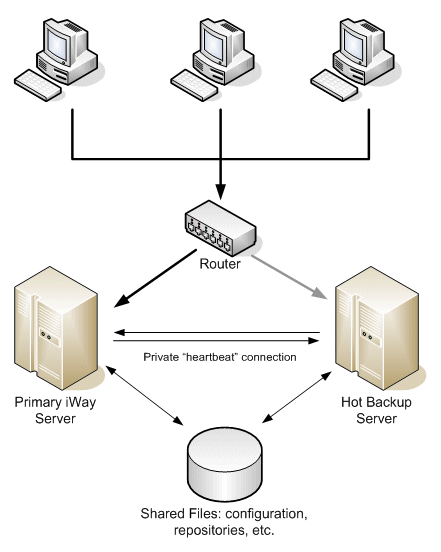Implementing High Availability
There are a number of strategies and techniques you
can use to implement high availability in your environment, including:
- Simple failover
using iWay heartbeat
- Simple failover
using third-party tools
- IP-based horizontal
scaling
- Web-based horizontal
scaling
- Web-based scaling
using iWay Performance Monitor
- Horizontal
scaling for queuing
- Horizontal
scaling and transactions
The following section describes each of these strategies and techniques.
x
Simple Failover Using iWay Heartbeat
iWay Service Manager (iSM) can be deployed to automatically
fail over to another waiting machine usually referred to as a "hot
backup" host. In this model, configuration and repository files
are shared so that the backup iSM behavior is identical to the primary
iWay Service Manager. Simple failover relies on iWay's native functionality
to emit and respond to "heartbeat" messages which signify normal
operation of the primary server. When a failure is detected, the
backup host executes a process which manages the switch-over (sending
an appropriate message to the router to reconfigure itself, posting
an email to the SysOp, and so on) and then assumes the workload
of the primary server. It should be noted that the primary and backup
servers need not be located in the same data center, for example,
they may be geographically dispersed.

x
Simple Failover Using Third-Party Tools
A third-party tool clustering or failover product such
as Veritas Cluster Server can replace iWay's heartbeat, monitoring,
and failover process flow logic. In this case, iWay is unaware of
the failover management and is run in stand-alone mode. The topology,
configuration, and other requirements will be dictated by the needs
of the third-party tool.
